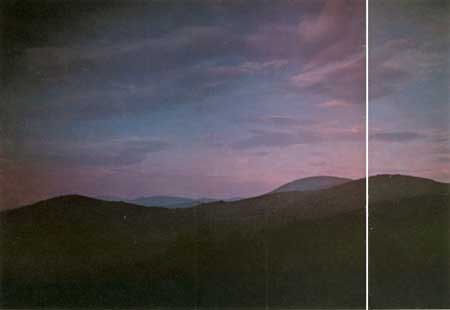|
SHENANDOAH National Park |
 |
Preface
This book is a natural history of Shenandoah National Park. It tells the story of plants, animals and men living on this particular piece of earth, not only as it exists now, but also as it has existed in the past. The geologic records show us that over the long term nature has wrought the most profound changes. Yet over the short term we and our ancestors have also shaped this landscape, for good and ill, and its future rests to an important degree in our hands.
Though the book is not intended as a guide to the park, it does indicate some of the places to see aspects of the park's story—such as deer, different kinds of forest, and geologic evidence of past events. It is designed for an evening's reading, most profitably just before or during a visit to the park. Checklists are included in the appendix for persons with special interest in particular groups of plants or animals.
My first-hand knowledge of Shenandoah was gained over a number of years and sharpened in two months of intensive research. Literature and other persons supplied much of the information on which this book is built. Some of the most helpful literary sources are listed in the appendix. The persons who have contributed in some way are legion, but I would like to single out a few for special thanks.

The park staff, including seasonal naturalists, supplied much information and simplified the logistics of field research. I should like to extend particular thanks to former Superintendent Taylor Hoskins, Chief Naturalist E. Ray Schaffner, former Assistant Chief Naturalist Bruce McHenry, Naturalist Frank Deckert, Chief Ranger Douglas Warnock, District Ranger Robert Johnson, Ranger Roy Sullivan, and Fire Control Aide Clinton Runyon.
Two "civilians" were exceptionally helpful. Darwin Lambert, a writer who lives a pioneer life on the edge of the park and who has known the Blue Ridge since pre-park days, answered many questions and allowed me to use information from his new book about man/nature relationships in Shenandoah. My chapters about Indians and mountain farmers are based to a large extent on his manuscript, though he is of course not responsible for my interpretations. Charles E. Stevens of Charlottesville, Virginia, enthusiastically imparted some of his detailed store of knowledge about the park's geology, plants, and birds on field trips in the south section. He also developed the habitat classification and provided much of the information that appears in checklists in the appendix.
The Big Meadows people—Hugh and Aggie Crandall, Henry and Millie Heatwole—generously shared their intimate knowledge of the park and offered warm hospitality. Such people are the best friends a park or a park researcher could have. Virginia Phelps made a special effort to obtain needed photographs.
For reviewing the geology chapter or supplying geological information, I would also like to thank Drs. John C. Reed, Jr., Frank C. Whitmore, Avery Drake, and John T. Hack, all of the U.S. Geological Survey. Allen Patterson and Mrs. Zada Lam, former residents of the park area, supplied useful details about the past. William Witt reviewed the chapter, Biography of a Stream, and made the checklist of reptiles and amphibians; Dr. Robert Jaeger provided other herpetological information. Peter Mazzeo, Curator of the herbarium at the National Arboretum, kindly reviewed chapters 4 through 7 and the plant checklists. Drs. Oliver Flint (insects), Richard Manville (mammals), and Alexander Wetmore (birds) helped in their areas of special knowledge.
I hope I have made accurate and interesting use of the information so abundantly proffered.
Napier Shelton
Washington, D.C.
March, 1975

|

|
| NPS History | History & Culture | National Park Service | Contact |
|
Last Modified: Sat, Nov 4 2006 10:00:00 pm PST |


